20 Foods for Burning Fat That Experts Swear By

Weight loss comes down to long-term healthy habits—after all, you want to keep the weight off permanently. "A lifestyle with good nutrition, regular physical activity, and stress management supports a healthy weight," says the CDC. "People who lose weight at a gradual, steady pace—about 1 to 2 pounds a week—are more likely to keep the weight off than people who lose weight quickly." Certain foods can really help move that process along—ideally ones with plenty of protein, healthy fats, and nutrients. Here are 20 foods to keep on rotation for fat burning, weight loss, and overall health.
Avocados
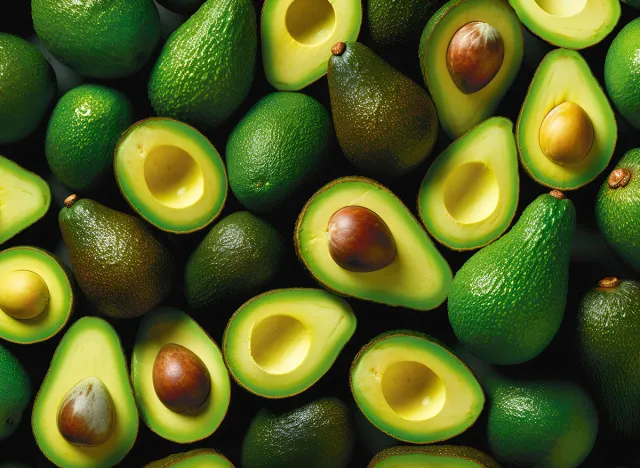
Avocados are packed full of healthy fats and fiber, which encourage satiety and weight loss. "The type of fat in an avocado is mainly unsaturated (specifically, monounsaturated), which, when eaten in place of high-saturated-fat foods, can help maintain healthy cholesterol levels," dietitian Victoria Taylor tells the British Heart Foundation. "Compared with other high-fat foods, avocados are a healthy option."
Eggs
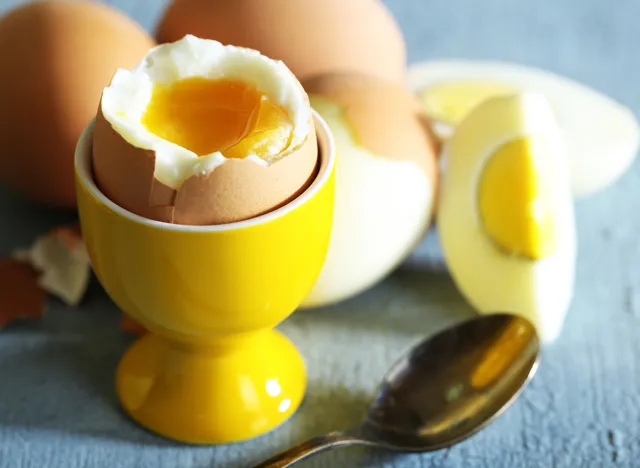
Eggs are full of high-quality protein, fats, and nutrients, at just 70 calories for one egg. "High-protein, nutrient-dense foods like eggs can be helpful with weight management because they are instantly filling," Audra Wilson, MS, bariatric dietitian at Northwestern Medicine Delnor Hospital, tells USA Today.
Greek Yogurt
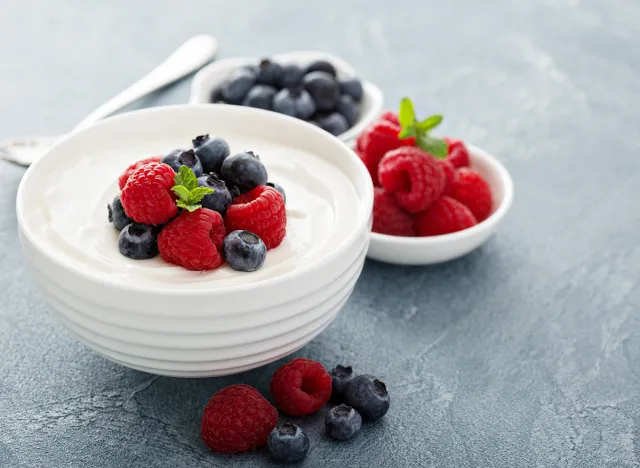
Greek yogurt has healthy fats and protein to encourage fat-burning. "Regular yogurt doesn't have much protein and it's typically loaded with sugar," Courtney Schuchmann, MS, RD, LDN told UChicagoMedicine. "Greek yogurt is a better option, as it is higher in protein, but be careful because it can also be loaded with sugar. So you have to read the labels."
Chili Peppers
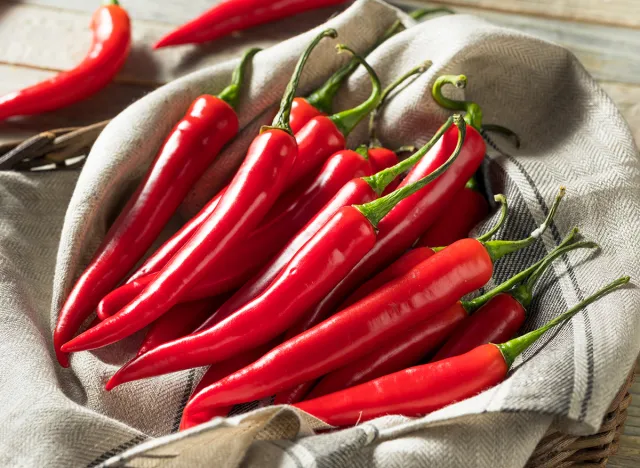
Spicy food can encourage fat-burning, experts say. "Spicy food is a hot topic in nutrition — no pun intended," registered dietitian/nutritionist Patricia Bridget Lane tells the Cleveland Clinic. "It seems to rev up the body's fat-burning mechanisms," says Lane. "That can help with weight loss and weight management."
Coffee
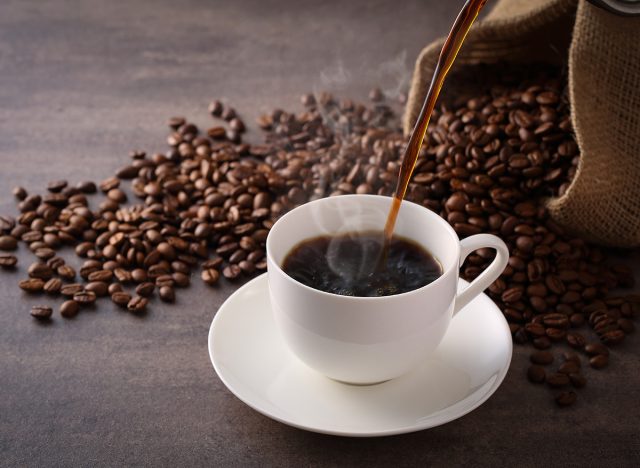
Coffee without calorific addictions can help burn fat. "There have been quite a few studies that suggest higher blood concentrations of caffeine may be associated with a lower body mass index (BMI) and lower body fat mass," Allegra Picano, RDN tells Henry Ford Health.
Green Tea
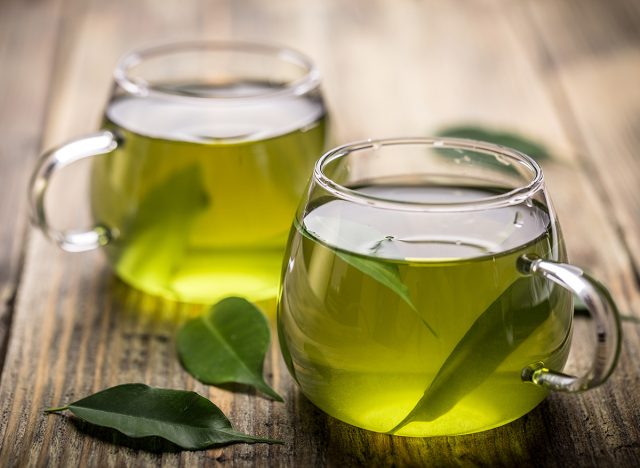
Green tea is calorie-free and packed with healthy antioxidants. "You're drinking fluids, and when we are getting our fluids from tea, hopefully we are not getting it from soda," says Teresa Fung, adjunct professor of nutrition at Harvard T.H. Chan School of Public Health.
Mushrooms
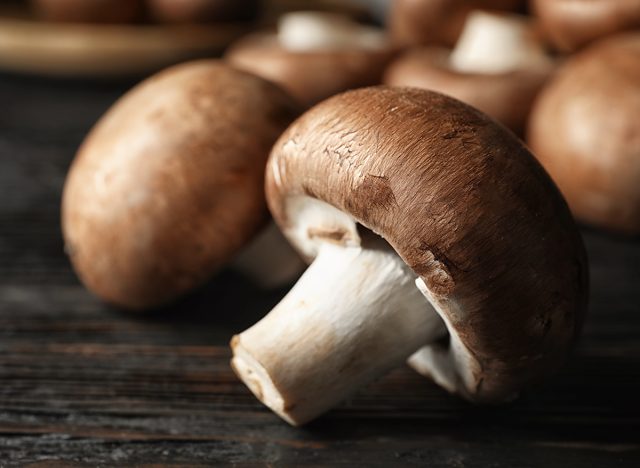
Low in calories and high in nutrients, mushrooms are a perfect fat-burning weight loss food. "One distinctive characteristic of mushrooms is they provide umami to dishes," Kjersten Nett, RDN, LD tells Mayo Clinic Health System. "Umami often is considered the fifth basic taste, along with sweet, sour, salty and bitter. This brothy, savory taste makes it a good meat alternative. Try replacing one-quarter to one-half of the meat in a recipe with chopped mushrooms."
Berries
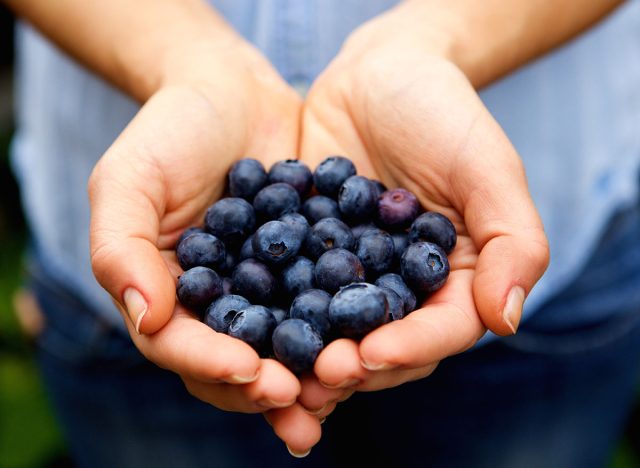
"Berries have an impressive nutritional breakdown, which is why so many dietitians suggest eating them. Not only are they naturally sweet, but they are also a low-calorie food. Each one-cup serving of fresh berries has at most between 50-75 calories—that's all! What a great way to get that sweet taste you are craving without the extra calories. Compare that to a hot fudge sundae!" says Obesity Action.org.
Nuts
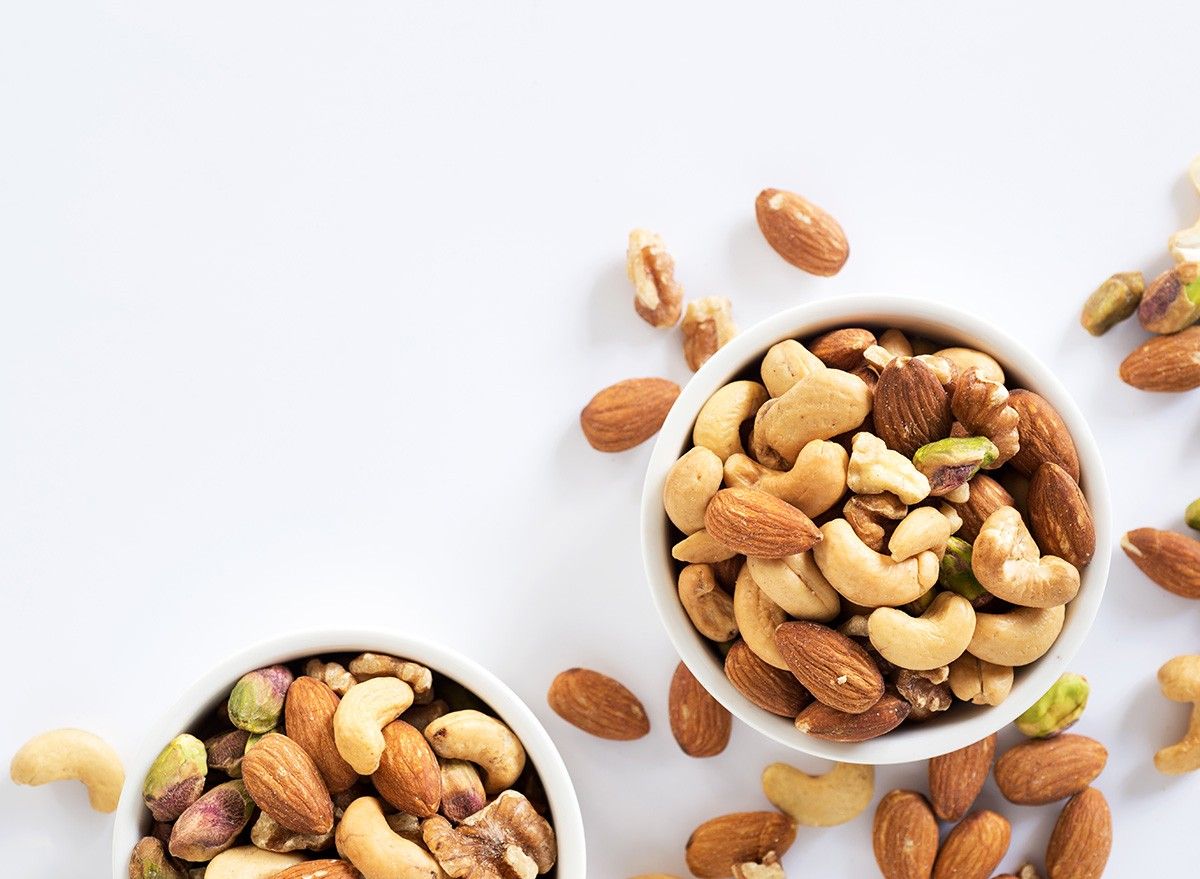
Nuts are the ultimate weight-loss snack. "In just a handful of nuts, which is about an ounce or a quarter of a cup, you get a lot of bang for the buck. They contain anywhere from 3 to 7 grams of protein per ounce, 1 to 3 grams of fiber, and 160 to 200 calories," says registered dietitian Kathy McManus, director of the Department of Nutrition at Harvard-affiliated Brigham and Women's Hospital.
Oily Fish
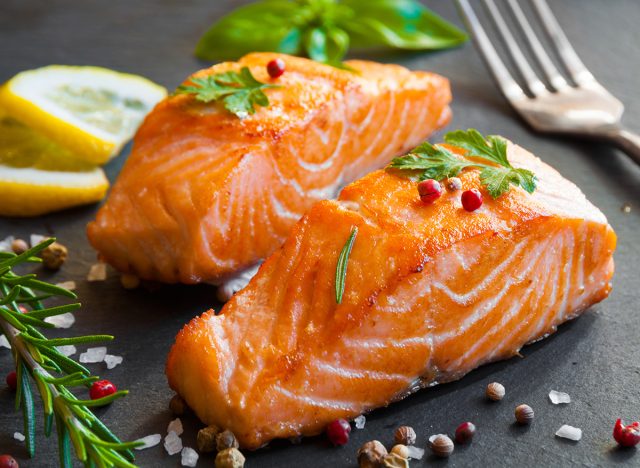
Salmon and mackerel benefit your health and your waistline by lowering inflammation and promoting fat burning. "Try to eat at least two servings a week of fish, especially fish that's rich in omega-3 fatty acids," says the Mayo Clinic. "Doing so appears to reduce the risk of heart disease, particularly sudden cardiac death. Eating fish rich in omega-3 fatty acids and other nutrients seems to be better for the heart than just using supplements."
Sweet Potato
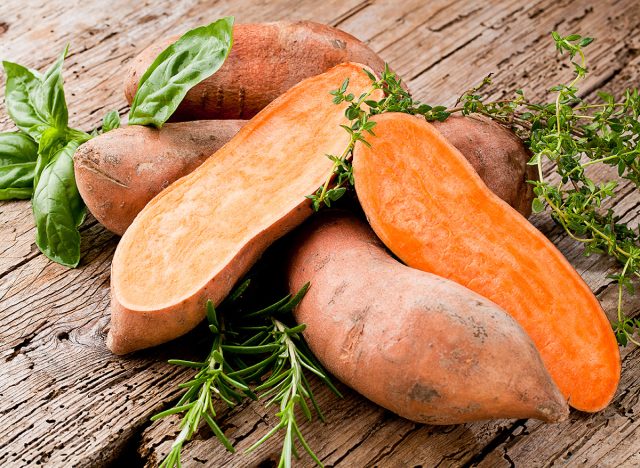
Sweet potatoes are versatile and delicious. "In addition to being budget-friendly, there are many health benefits to potatoes," says UC Davis Health. "They're rich in energy, fiber, vitamins, and minerals. Try to include different varieties of potatoes in your diet to maximize the nutritional benefits."
Whole Grains
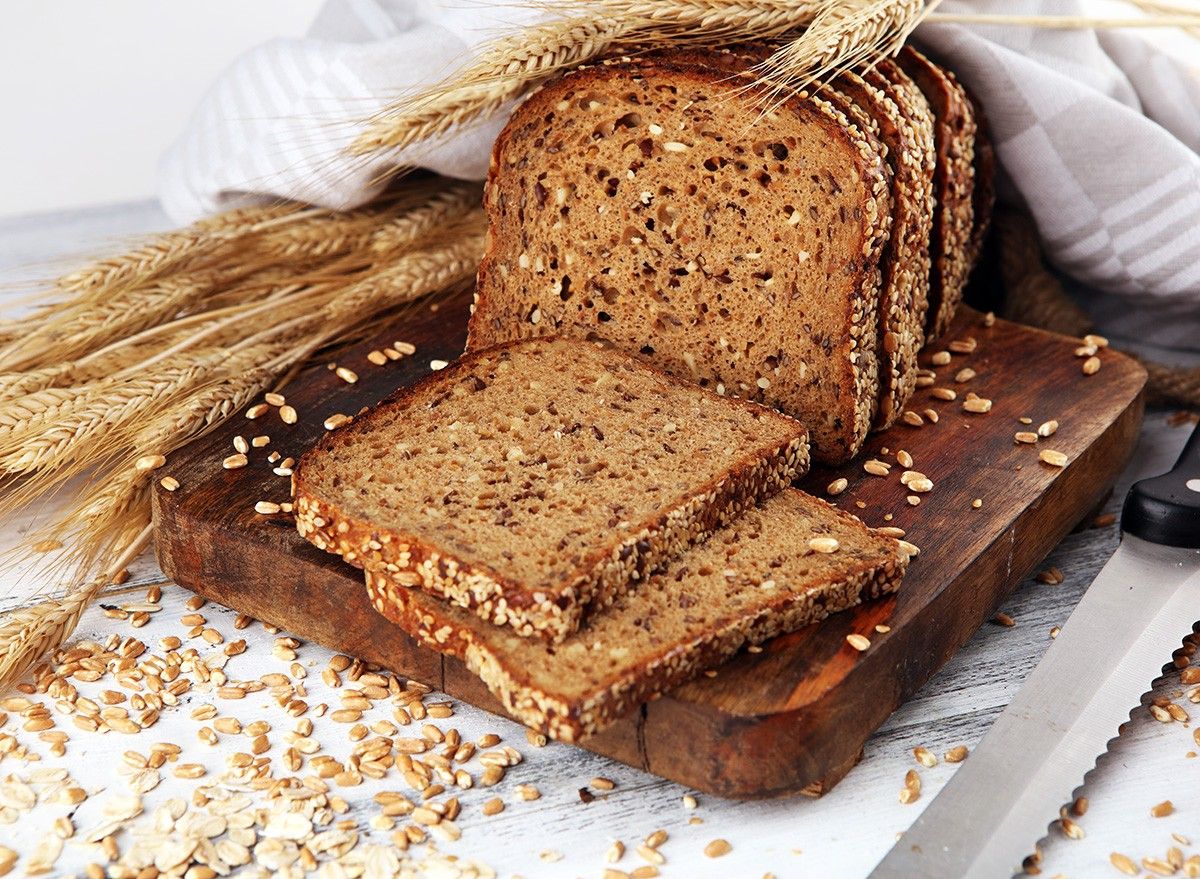
When eating carbohydrates, opt for whole grains for the fiber benefits. "In addition to weight control, higher fiber diets can also help to prevent type 2 diabetes and cardiovascular disease," Dr. Frank Hu, professor of medicine at Harvard Medical School and professor of nutrition and epidemiology at the Harvard School of Public Health, tells Harvard Health.
Ginger
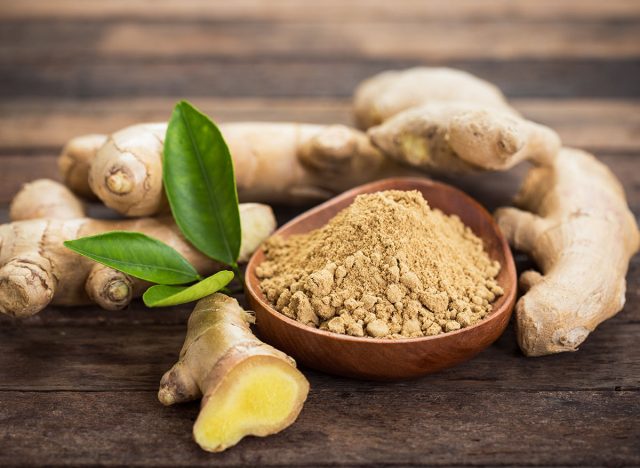
Eating or drinking ginger can boost your metabolism. "Just adding 2 grams of ginger powder in hot water and drinking it with a meal may help you burn up to 43 more calories," Tracie Cavalier, RDN, LDN, CNSC, tells Ochsner Health. "It promotes a feeling of fullness, decreases hunger levels and calm the digestive tract. You can take supplements or add ginger powder to your meals to get the benefits. Check out a few drinks that improve digestion here."
Cumin
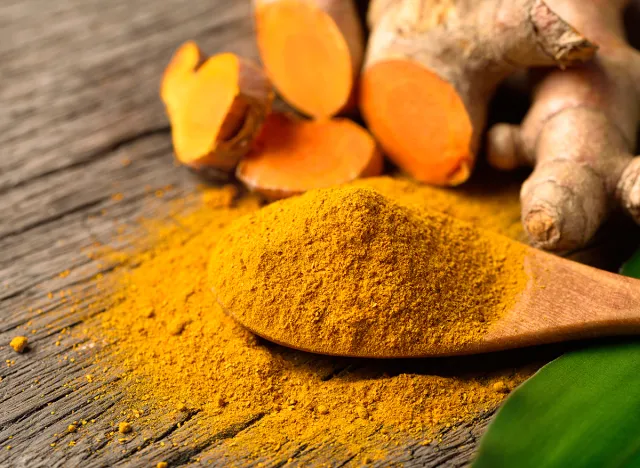
Cumin is delicious and may have fat-burning qualities. "One study even found that it was as effective as the weight-loss drug Orlistat. If that weren't reason enough to add it to your spice rack, it has also been shown to lower cholesterol and triglycerides," Karen Ansel, M.S., RDN, tells PatriciaBannan.com.
Spinach
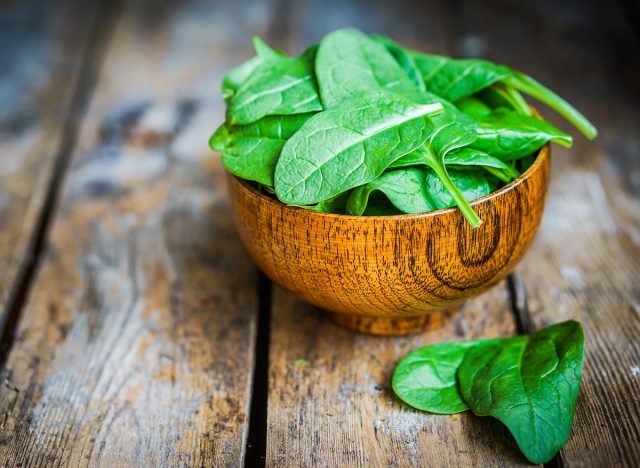
Spinach is versatile, low-calorie, and full of nutrients. "Spinach is one of the most nutritious foods you can eat," registered dietitian Kayla Kopp, RD, LD, tells the Cleveland Clinic. "It's also very easy to use. Raw or cooked, spinach is great in salads, appetizers, smoothies and main dishes."
Chia Seeds
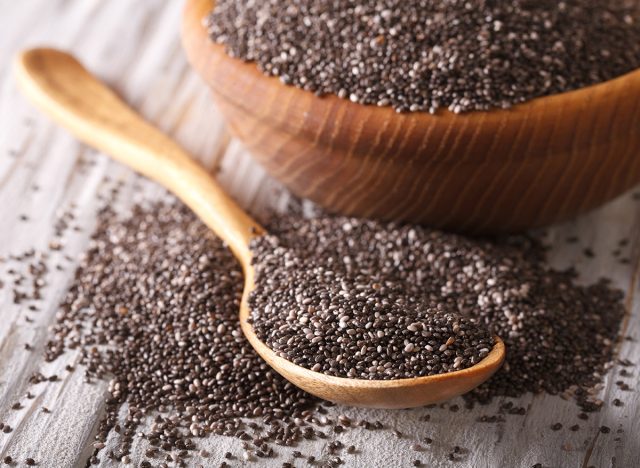
Include versatile chia seeds in your weight loss diet. "Chia seeds have many nutritional benefits," Romi Londre, RDN, CD, tells the Mayo Clinic. "They are high in omega-3 fatty acids and fiber. Chia provides a similar amount of omega-3 fatty acids as ground flaxseed in the form of alpha linolenic acid, or ALA. They can help with weight loss."
Asparagus
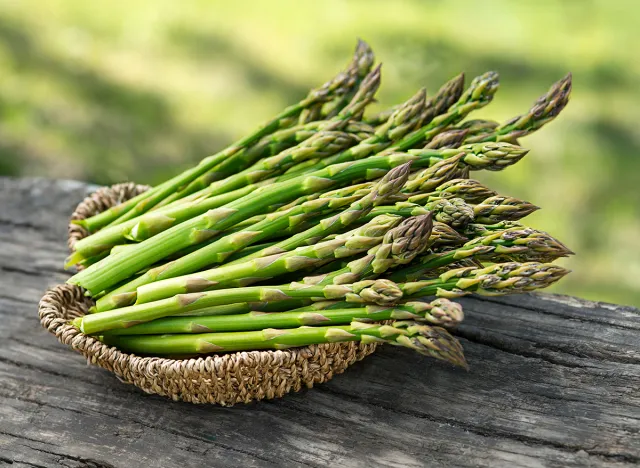
Asparagus is rich in fiber and nutrients to encourage weight loss and fat burning. "If you are watching your calories, asparagus can help you maintain your weight," according to the University of Arkansas System Division of Agriculture. "With only 30 calories per one cup serving, and low in fat you can see how it can help with weight loss."
Cottage Cheese
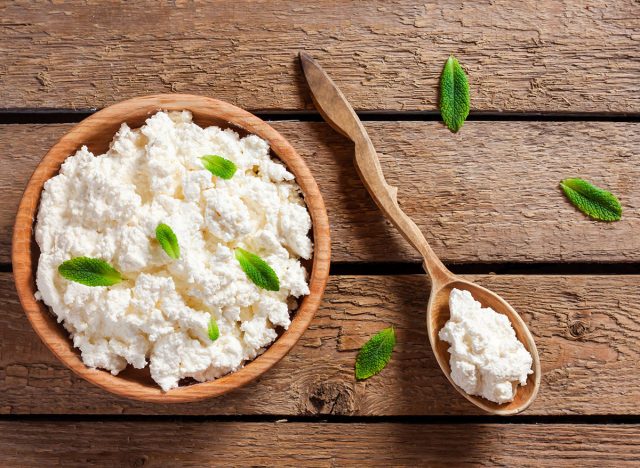
Cottage cheese is an excellent weight loss snack. "In a half-cup serving of cottage cheese, there's approximately 14 grams of protein," Alison Graziano, RDN, LDN, tells Massachusetts General Hospital. "Making it an excellent choice for individuals looking to increase their protein intake."
Tofu and Edamame
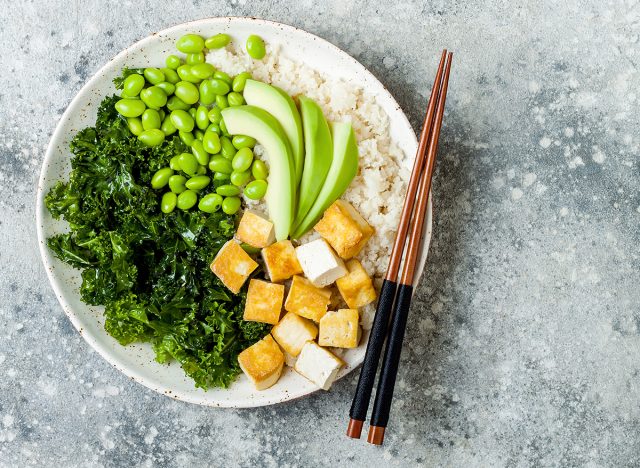
Tofu and edamame are packed full of plant-based protein. "Soybeans contain all of the essential amino acids necessary for human nutrition and have been grown and harvested for thousands of years," Aaron J. Michelfelder, MD, tells American Family Physician. "Populations with diets high in soy protein and low in animal protein have lower risks of prostate and breast cancers than other populations."
Water Every Day
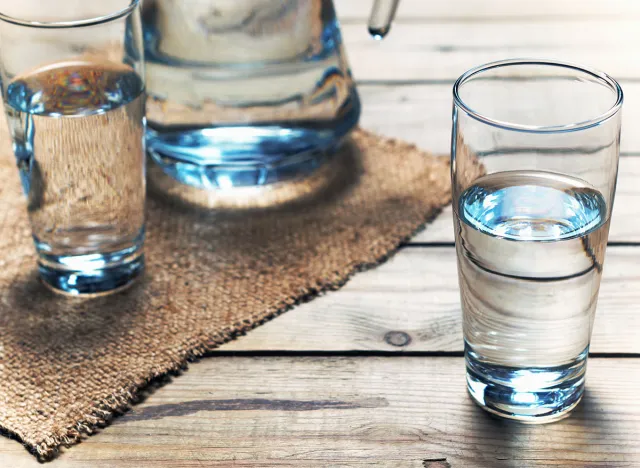
Don't forget to drink water every day. "Science suggests that water can help with weight loss in a variety of ways," according to Johns Hopkins University. "It may suppress your appetite, boost your metabolism, and make exercise easier and more efficient, all of which could contribute to results on the scale." And if you enjoyed this article, take advantage of these 15 Quick Ways to Lose Body Fat Percentage in a Week.




